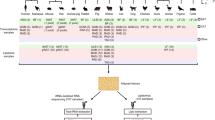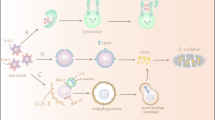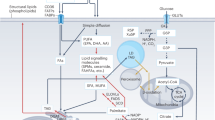Abstract
THE hypothesis that there is a correlation between the pathogenesis of atheroma and the metabolism of lipids appears to have sprung from the fact that the earliest lesion which the pathologist sees in atheroma is the accumulation of lipid material in the intima and sub-intimal connective tissues. Among the various substances classed as lipids that may play a part in causing atheroma, cholesterol and its esters are the most highly favoured suspects. This suspicion has been harboured since Vogel1 established in 1847 the invariable presence of cholesterol in atheromatous lesions, and this idea was much strengthened by the production of experimental atheroma in rabbits by giving them pure cholesterol in oil2,3.
This is a preview of subscription content, access via your institution
Access options
Subscribe to this journal
Receive 51 print issues and online access
$199.00 per year
only $3.90 per issue
Buy this article
- Purchase on SpringerLink
- Instant access to full article PDF
Prices may be subject to local taxes which are calculated during checkout
Similar content being viewed by others
References
Vogel, J., The Pathological Anatomy of the Human Body, first ed. (Lea and Blanchard, 1847).
Anitschkow, N., and Chalatov, S., Centralbl. allg. Path. u. Path. Anat., 24, 1 (1913).
Wacker, I., and Hüeck, W., München. Med. Wchnschr., 60, 2097 (1913).
McKinney, B., Lancet, ii, 281 (1962).
McKinney, B., Proc. Zool. Soc., Lond. (in the press).
Handbook of Biological Data, Table 38 (W. B. Saunders Co., Philadelphia and London, 1956).
Author information
Authors and Affiliations
Rights and permissions
About this article
Cite this article
McKINNEY, B., LUCK, C. Serum Lipids in some purely Herbivorous Wild Animals. Nature 202, 705–706 (1964). https://doi.org/10.1038/202705b0
Issue date:
DOI: https://doi.org/10.1038/202705b0



